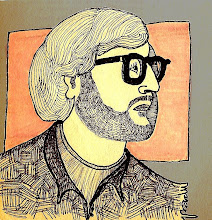miércoles, 31 de octubre de 2012
Erik Truffaz
After three years and three albums springing from some fruitful partnerships (Benares, Paris and Mexico), Erik Truffaz has gone back to his old quartet. Close friend Benoît Corboz has taken up the keyboards formerly played by Patrick Muller, and brought his rigged
Hammond organ and his Rhodes piano into the studio. Sophie Hunger, one of Erik’s Swiss compatriots, joined the musicians to record one of the compositions, Let me go! and a cover version of an obscure Bob Dylan number, Dirge.
The slow, sad track that opens the album sets the tone for the whole opus. The secret of the dead sea, with its vocal and drum blend, unites the chantings of the Hammond organ with those of Truffaz’s trumpet. The musician explains: "The album is pretty sombre and sad. But we didn’t set out to do it that way. Each of us comes to the studio with more or less finished compositions and then we root out a sound together. It’s only afterwards that we discover the result.” The musician has dropped the electronic effects of yore and placed his new silver-incrusted instrument centre stage, producing an ampler sound that at times approaches the flute.
It is the keyboards that provide the effects – dreamlike sounds, like on Mechanic Cosmetic, a track created from one of the quartet’s very modal improvisations. The more agitated Lost in Bogota, which the Rhodes piano turns almost funky, is a long way from the D&B rhythm of BC One, an ethereal tune created and dissected by Benoît Corboz. In Between propagates a hushed (dis)quiet, with the trumpet playing softly and the drums taking back stage before the Rhodes piano comes whirling in.
In Between is in constant oscillation – flitting from past to present, joy to sadness, life to death.
Erik Truffaz In Between (Blue Note/EMI) 2010
Etiquetas:
Benoit Corboz,
Eric Truffaz,
jazz,
Marc Erbetta,
Marcello Giuliani,
Sophie Hunger
Jack
Jack Reynolds emergió imperturbable y ajado, exiliado en Londres desde las glaciales calles del Sur de Gales, a principios de los 90. Una época famosa por la completa falta de justicia en lo relacionado con el éxito comercial de los grupos, los más o los menos populares. Sin embargo, el primer disco de Jack, "Pioneer Soundtracks", y sus correspondientes singles, editados en Too Pure (el sello más pujante del momento, entonces con Stereolab o Pj Harvey en sus filas), y producidos por Peter Walsh, antiguo colaborador de Scott Walker, fue descrito como "brutalmente honesto" por el NME, "definitivamente necesario" (Melody Maker), "tremendamente ambicioso" (The Guardian), y "deslumbrante hazaña" (Q). Los seis miembros de Jack - Anthony más George Wright, Matthew Scott, Richard Adderley, Patrick Pulzer y Colin Williams " giraron el Reino Unido dos veces con Suede (quienes declararon que "Pioneer Soundtracks" fue el mejor elepé del 96) y luego con The Divine Comedy. Entonces, el incansable inquieto Reynolds creó el alter ego de Jack, Jacques. El álbum "How To Make Love..." se editó en Setanta en el 97. Producido y grabado en una semana junto a Momus (Nick Currie), no era un intento de capturar la mejor toma, sino de inmortalizar la primera. En el 98 se publicó el segundo disco de Jack, "The Jazz Age", con el entusiasmo de la crítica y unas ventas modestas. La transformación de la realidad urbana en una realidad fantástica, su mágica conversión de Holloway Road en Hollywood, lo sitúa entre los hallazgos musicales más épicos y visionarios del momento. Artículo de Rock Wheels.
Etiquetas:
Anthony Reynolds,
Colin Williams,
Jack,
Matthew Scott,
Patrick Pulzer,
Richard Adderley,
Rock,
Ruth Gottlieb
Arvo Pärt
This is a remarkable release, both for its beauty and its novelty at programming. Für Alina is a two-minute solo piano piece composed by Pärt in l976 that ushered in his "tintinnabuli" style, that is, the bell-like, simple, no-notes-wasted method for which he has become beloved and famous. On this CD, pianist Alexander Malter plays it twice, as the second and fourth tracks; each iteration takes almost 11 minutes (Pärt assumed it would be embellished, and he chose this pair for the CD). There are minute variations in tempo, emphasis, and rubato from one to the other, but, all that being said, it amounts to 22 minutes of the most beautiful, contemplative music ever performed. Almost equally gentle is Spiegel im Spiegel, played as tracks 1, 3 and 5 and scored for piano and, respectively, violin, cello, and then violin again. The instruments mirror one another (Spiegel is German for mirror), with notes added to the scale with each repetition, and so on. Almost impossible to describe in its loveliness, each of the three sets is beautiful; the cello in track 3 gives it extra mellowness. This is music staggering in its simple complexity and a treat for the ear and heart.
Etiquetas:
Alexander Malter,
Arvo Pärt,
clasica,
Dietmar Schwalke,
Sergei Bezrodny
Suscribirse a:
Entradas (Atom)


















